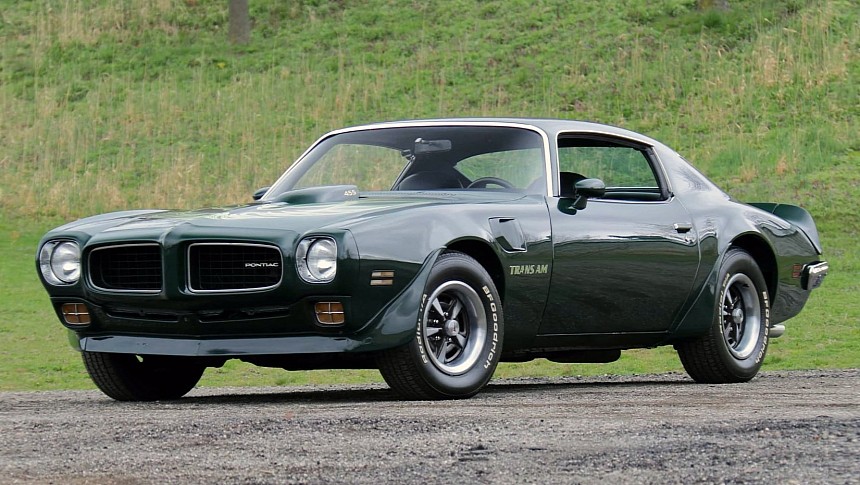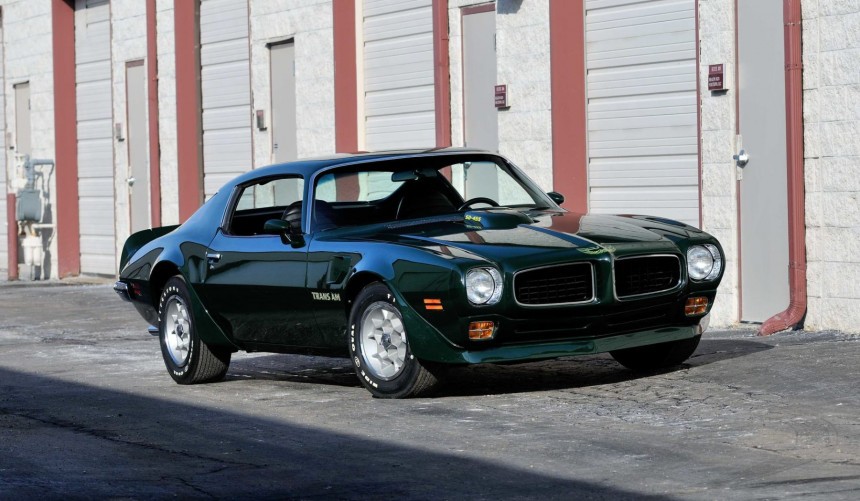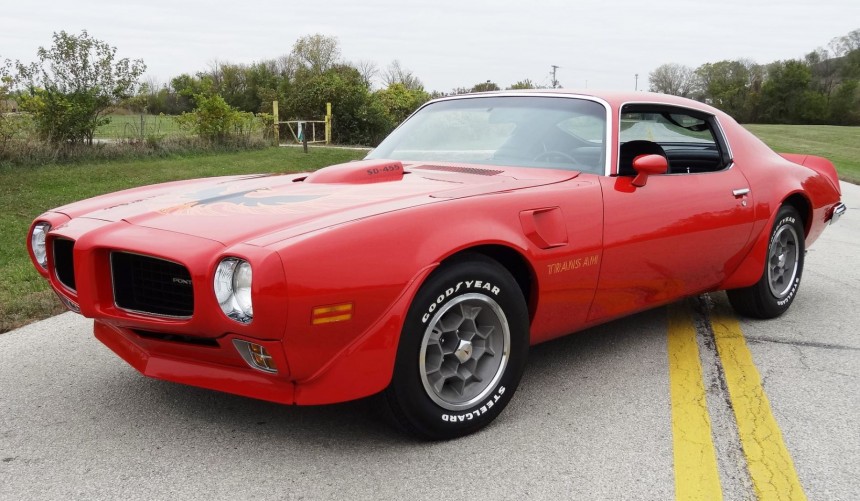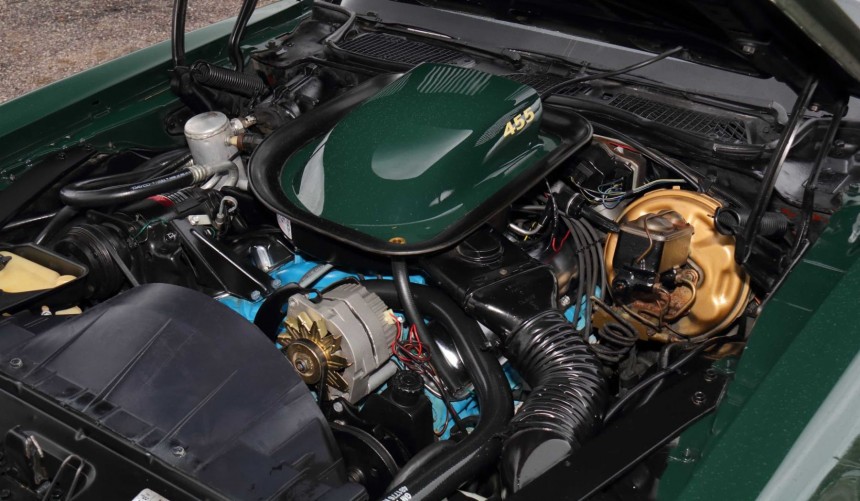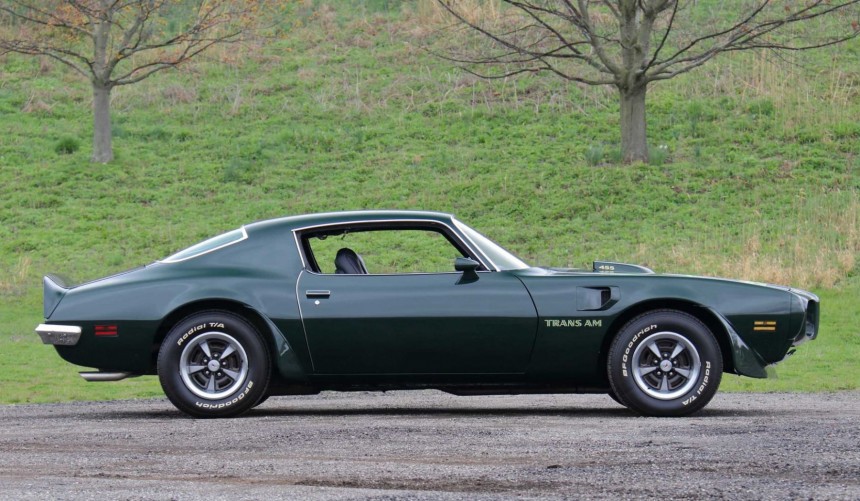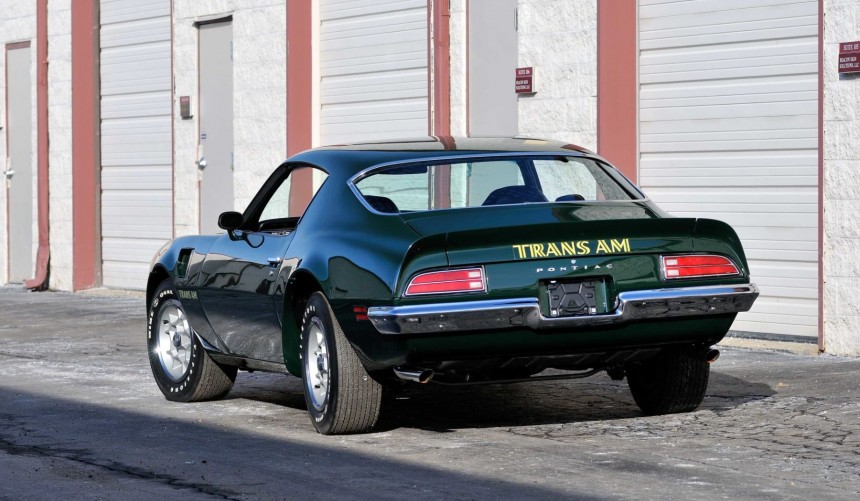By 1973, American carmakers attempted to cope with new emission and safety regulations (plus a global fuel crisis) by ditching the once-popular high-performance models in favor of so-called econoboxes. However, Pontiac decided to swim against the tide and carry the muscle car torch into the Malaise era.
Now defunct, Pontiac was one of the most successful automotive brands on the North American continent back in the 1960s.
During what was arguably the most exciting decade ever for American performance enthusiasts, GM's "excitement division" was responsible for popularizing the muscle car (or super car, as it was known back then).
It all started during the 1964 model year when the new second-generation Tempest/LeMans debuted with the GTO package on its order sheet.
Though it wasn't the first intermediate with a large-displacement, high-performance engine borrowed from larger full-size models, the GTO quickly became the most successful.
In the following years, Pontiac's recipe was used by other carmakers to cook up legendary muscle cars based on intermediate and even pony car platforms.
By 1970, these machines had reached the pinnacle of performance. Still, only a few years later, rising insurance premiums, tighter emission regulations, and a looming fuel crisis meant that the muscle car era came to an abrupt end.
Detroit's big three adapted by ditching performance in favor of economy. For the 1973 model year, the few muscle models that remained in production were either grossly underpowered or completely transformed into extremely dull cars.
During the 1960s, Pontiac had established itself as GM's performance brand, living by its famous motto: "We build excitement."
But as the curtain dropped on the performance segment, the division had to adapt in order to survive.
Most of its cars received underpowered, fuel-efficient V8s and modifications of questionable taste meant to comply with new regulations.
While the GTO was relegated from a stand-alone model to an anemic option package for the new (and uglier) LeMans, the second-generation Firebird Trans Am continued to deliver excitement thanks to the stubbornness of Special Projects Engineer Herb Adams, as well as Senior Project Leaders, Skip McCully, and Tom Nell.
Though hindered by the new regulations and oil crisis that kicked off what we now refer to as the Malaise era (named after Jimmy Carter's 1979 Malaise Speech), the trio didn't give up on old-school muscle, convincing management to greenlight the Trans Am SD-455 - despite everyone deeming it a bad idea.
Along with its Bowtie cousin, the Camaro, Pontiac's Firebird was introduced for the 1967 model year with Ford's successful Mustang in its crosshairs.
By 1970, both GM pony cars were completely redesigned. Unlike the Mustang, which morphed into a sedate Pinto-based econobox in 1974, they kept the aggressive, performance-looking design alive for eleven years.
The 1973 Firebird had to meet new safety regulations that went into effect that year, so its chassis received extra reinforcements, particularly in the front fender and bumper area.
Though subtle exterior modifications were made as a result, the car continued to look as good - if not better than the previous iterations.
From a styling point of view, the most desirable Firebird was, of course, the Trans Am. Keeping the flashy and aggressive attitude of thoroughbred muscle alive, the 1973 model was available with the now-iconic "screaming chicken" hood decal and two new colors: Buccaneer Red and Brewster Green.
But, even though it looked cool, the Firebird's sales were going downhill fast. In the absence of a miracle, GM was seriously considering discontinuing the model or applying the nameplate to a new econobox.
Thanks to the efforts of a dedicated team led by Adams, McCully, and Nell, that miracle came in the form of the 1973 Trans Am SD-455.
While Detrot's Big Three was running away from high-powered muscle cars, the team convinced Pontiac's higher-ups that the only way to boost Firebird sales was to bring back high performance to the Trans Am trim.
With the ongoing restrictions and economic climate, that decision seemed like a losing bet, but the division decided to go all in anyway.
The standard 1973 Trans Am engine was now a non-HO (High Output) version of the 1971 455-ci (7.5-liter) L75, choked to a reasonable 250 net horses.
But the big news was the surprising addition of a new 455 Super Duty engine. It added 40 additional horses and ultimately proved to be a winning bet.
The race-derived street engine was conceived by exploiting several gray areas in the EPA regulations. For example, using the standard 455 block meant that the Super Duty was considered a run-of-the-mill 455, so it only had to pass a basic emissions test.
However, the Super Duty was by no means a run-of-the-mill 455. Codenamed LS2, the hand-assembled heavy-hitter was built around a 455 block with beefed-up bulkheads, additional webbing, and four-bolt mains.
Like the high-performance, race-derived muscle car engines of the glory days, the bottom end received a host of special hardware like forged aluminum pistons, forged steel conrods, and a nitrated crankshaft. Furthermore, it came with conventional wet sump lubrication but was designed to allow conversion to a race-ready dry sump system.
Up top, the cylinder heads inspired by those of the iconic Ram Air IV received large, free-flowing intake and exhaust ports. It featured header-like exhaust manifolds and a cast-iron, dual-plane intake with a single Rochester four-barrel sitting on top.
Though it ran a low 8.25:1 compression ratio and featured an EGR, the Super Duty was still able to make 290 SAE net hp and 395 lb-ft (536 Nm) of torque.
Equipped with this engine linked to either a three-speed automatic or a four-speed manual, the 1973 Trans Am could consistently run the quarter mile in the low-14-second range.
The Trans Am SD-455 was not only the fastest, most powerful pony car available that year (by a large margin) but also more potent than any intermediate-based muscle car. It could even give the 1973 Corvette a run for its money and embarrass many late-1960s high-performance legends.
In terms of sales, the SD-455 didn't fare too well, partially because its release was delayed due to EGR implementation issues.
In total, only 252 units were produced in 1973. However, the model profoundly impacted revitalizing sales of the Firebird range - which grew exponentially - and ensured the model's survival in its badass 1970 guise.
It returned in 1974 with minor changes and was discontinued at the end of the model year due to the addition of mandatory catalytic convertors from 1975 onwards.
Today, surviving 1973 Trans Am SD-455 examples in good shape are scarce. Although earlier Ram Air IV Firebirds overshadowed it for decades, its value has skyrocketed in recent years, reaching six-digit figures.
The 1973 Trans Am SD-455 was a risky project that became incredibly successful during a time when developing a new high-performance car was considered pure madness. The last thoroughbred muscle car of the golden age continues to be a fascinating car half a century after its introduction.
For more on this legendary ride, we recommend watching the YouTube video below by Rare Cars.
During what was arguably the most exciting decade ever for American performance enthusiasts, GM's "excitement division" was responsible for popularizing the muscle car (or super car, as it was known back then).
It all started during the 1964 model year when the new second-generation Tempest/LeMans debuted with the GTO package on its order sheet.
Though it wasn't the first intermediate with a large-displacement, high-performance engine borrowed from larger full-size models, the GTO quickly became the most successful.
In the following years, Pontiac's recipe was used by other carmakers to cook up legendary muscle cars based on intermediate and even pony car platforms.
By 1970, these machines had reached the pinnacle of performance. Still, only a few years later, rising insurance premiums, tighter emission regulations, and a looming fuel crisis meant that the muscle car era came to an abrupt end.
Detroit's big three adapted by ditching performance in favor of economy. For the 1973 model year, the few muscle models that remained in production were either grossly underpowered or completely transformed into extremely dull cars.
Stubronly continuing to deliver excitement
But as the curtain dropped on the performance segment, the division had to adapt in order to survive.
Most of its cars received underpowered, fuel-efficient V8s and modifications of questionable taste meant to comply with new regulations.
While the GTO was relegated from a stand-alone model to an anemic option package for the new (and uglier) LeMans, the second-generation Firebird Trans Am continued to deliver excitement thanks to the stubbornness of Special Projects Engineer Herb Adams, as well as Senior Project Leaders, Skip McCully, and Tom Nell.
Though hindered by the new regulations and oil crisis that kicked off what we now refer to as the Malaise era (named after Jimmy Carter's 1979 Malaise Speech), the trio didn't give up on old-school muscle, convincing management to greenlight the Trans Am SD-455 - despite everyone deeming it a bad idea.
A legend evolving rather than morphing into an econobox
By 1970, both GM pony cars were completely redesigned. Unlike the Mustang, which morphed into a sedate Pinto-based econobox in 1974, they kept the aggressive, performance-looking design alive for eleven years.
The 1973 Firebird had to meet new safety regulations that went into effect that year, so its chassis received extra reinforcements, particularly in the front fender and bumper area.
Though subtle exterior modifications were made as a result, the car continued to look as good - if not better than the previous iterations.
From a styling point of view, the most desirable Firebird was, of course, the Trans Am. Keeping the flashy and aggressive attitude of thoroughbred muscle alive, the 1973 model was available with the now-iconic "screaming chicken" hood decal and two new colors: Buccaneer Red and Brewster Green.
But, even though it looked cool, the Firebird's sales were going downhill fast. In the absence of a miracle, GM was seriously considering discontinuing the model or applying the nameplate to a new econobox.
All in on the Super Duty
While Detrot's Big Three was running away from high-powered muscle cars, the team convinced Pontiac's higher-ups that the only way to boost Firebird sales was to bring back high performance to the Trans Am trim.
With the ongoing restrictions and economic climate, that decision seemed like a losing bet, but the division decided to go all in anyway.
The standard 1973 Trans Am engine was now a non-HO (High Output) version of the 1971 455-ci (7.5-liter) L75, choked to a reasonable 250 net horses.
But the big news was the surprising addition of a new 455 Super Duty engine. It added 40 additional horses and ultimately proved to be a winning bet.
Unrivaled performance
However, the Super Duty was by no means a run-of-the-mill 455. Codenamed LS2, the hand-assembled heavy-hitter was built around a 455 block with beefed-up bulkheads, additional webbing, and four-bolt mains.
Like the high-performance, race-derived muscle car engines of the glory days, the bottom end received a host of special hardware like forged aluminum pistons, forged steel conrods, and a nitrated crankshaft. Furthermore, it came with conventional wet sump lubrication but was designed to allow conversion to a race-ready dry sump system.
Up top, the cylinder heads inspired by those of the iconic Ram Air IV received large, free-flowing intake and exhaust ports. It featured header-like exhaust manifolds and a cast-iron, dual-plane intake with a single Rochester four-barrel sitting on top.
Though it ran a low 8.25:1 compression ratio and featured an EGR, the Super Duty was still able to make 290 SAE net hp and 395 lb-ft (536 Nm) of torque.
Equipped with this engine linked to either a three-speed automatic or a four-speed manual, the 1973 Trans Am could consistently run the quarter mile in the low-14-second range.
The last thoroughbred muscle car of the golden age
In terms of sales, the SD-455 didn't fare too well, partially because its release was delayed due to EGR implementation issues.
In total, only 252 units were produced in 1973. However, the model profoundly impacted revitalizing sales of the Firebird range - which grew exponentially - and ensured the model's survival in its badass 1970 guise.
It returned in 1974 with minor changes and was discontinued at the end of the model year due to the addition of mandatory catalytic convertors from 1975 onwards.
Today, surviving 1973 Trans Am SD-455 examples in good shape are scarce. Although earlier Ram Air IV Firebirds overshadowed it for decades, its value has skyrocketed in recent years, reaching six-digit figures.
The 1973 Trans Am SD-455 was a risky project that became incredibly successful during a time when developing a new high-performance car was considered pure madness. The last thoroughbred muscle car of the golden age continues to be a fascinating car half a century after its introduction.
For more on this legendary ride, we recommend watching the YouTube video below by Rare Cars.
